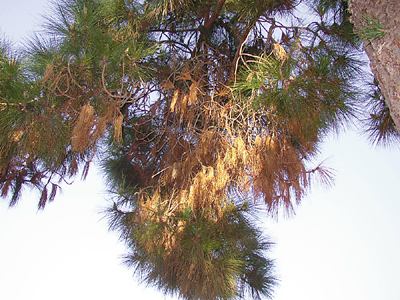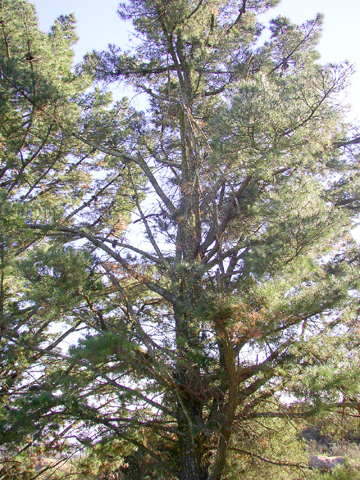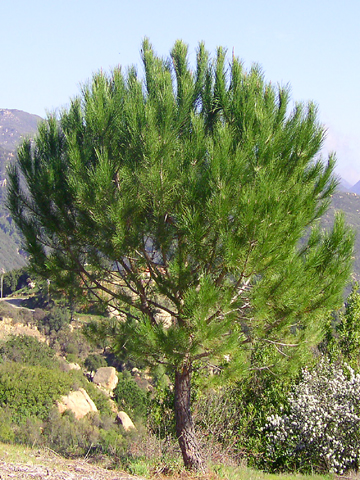At last, optimism looms for the future of California’s coastal signature tree - the Monterey Pine. In the last decade, this hearty pine tree species, which adorns west coast beaches, populates coastal mountain sides, accents both urban and rural neighborhoods, and flourishes in Christmas tree farms, has been threatened by a disease known as pitch canker, leaving beloved backyard monuments and entire forests alike scarred with scraggly decaying branches, gaping bare spots, and in many cases with the complete demise of the tree itself.

In California, pitch canker disease is showing its effects as far north as Mendocino and as far south as San Diego County. Caused by the fungus Fusarium Circinafum, pitch canker has been found in many parts of the world, including Mexico, South Africa, and Japan. Pitch canker was first discovered in the southeastern part of the United States in the 1950’s. It did not reach California until the 1980’s. By 1994, Monterey pine trees up and down the California coast were exhibiting the tell tale signs of infection.
The Monterey pine is one of many native pines in California that are susceptible to pitch canker disease. Other vulnerable species include Bishop pine, knobcone pine, gray pine, and coulter pine. Some planted stands of ponderosa pines, Douglas fir, and Torrey pines have been observed with the infection, but fortunately, native forests of these species appear to have been spared - thus far.
There is at present no known treatment or cure for pitch canker infection. The pathogen can spread rapidly, not only through airborne spores carried by the wind, but also, and perhaps more extensively by bark, twig, and cone beetles that transmit the disease from one tree to another. Early symptoms of pitch canker are dead branch tips with wilted reddish needles. As the disease advances, resinous cankers appear on the main stem and larger branches of the tree. Tree owners with infected trees are advised to consistently remove discolored needles and the decaying bark and branches, and to burn the debris near the location of the tree. Although this will not cure the disease, it could mitigate the spread of the disease throughout the entire tree, and help prevent the pathogen from spreading to neighboring trees. Pruning tools should be sterilized after use.
 With no known cure to pitch canker, the plight of the Monterey pine tree has been distressingly grim, and the fear has been that the disease would eventually spread to the Eastern Sierras. But scientists who are studying the problem have discovered that some Monterey pine trees exhibit a natural resistance to pitch canker. Such trees have managed to remain disease-free and to thrive in infected areas. Planting saplings from seeds harvested from these naturally resistant trees offers a reforesting approach with the beginnings of a solution to the threat of pitch canker. With no known cure to pitch canker, the plight of the Monterey pine tree has been distressingly grim, and the fear has been that the disease would eventually spread to the Eastern Sierras. But scientists who are studying the problem have discovered that some Monterey pine trees exhibit a natural resistance to pitch canker. Such trees have managed to remain disease-free and to thrive in infected areas. Planting saplings from seeds harvested from these naturally resistant trees offers a reforesting approach with the beginnings of a solution to the threat of pitch canker.
A decade ago, there were over 5000 pine trees on the Conference Grounds at Asilomar State Beach, located on the Monterey Peninsula, a 100+ acre site of seaside pines and dunes and tide pools the spiritual sanctuary for John Steinbeck in the early 1900’s. Now, as a result of pitch canker disease, more than half of the pine trees there have been removed. But through the efforts of the Asilomar resource management team, new saplings cultivated from the seeds of naturally resistant trees have been and are being planted in a commendable reforesting effort.
The Asilomar resource management team is working with research scientists who are addressing the pitch canker issue. Notable in this work is Dr.Thomas Gordon, Professor of Plant Pathology at The University of California at Davis, and co-chairman of the Pitch Canker Task Force. The initial task for the Asilomar team has been to harvest seeds from "naturally resistant" trees and germinate them in a hothouse for replanting. Once the seeds grow to a height of 16 to 18 inches, the next step involves injecting each seedling with a small dose of the pitch canker pathogen in order to test its resistance to the disease. These "inoculations" enable the team to cull out the non-resistant trees, leaving a small but healthy percentage of confirmed "naturally resistant" trees available to be planted
But a further and most remarkable discovery on the part of scientists has brought a new and even more exciting innovation to the table. Scientists found that there are certain young trees growing in the presence of infected trees that seem to somehow develop an immunity to infection. This unexplained occurrence has opened up the possibility of going one step beyond cultivating seedlings from "naturally resistant" trees, to actually developing the means to "induce resistance" in trees.
The decision was made to select a group of seedlings that had failed to show resistance with their initial inoculations, and to re-inoculate them. The trees were inoculated for a total of four times over a period of two years. What was discovered was that most, if not all of the previously non-resistant trees became resistant after this series of inoculations - an amazing feat of "induced resistance."

Scientists say that "induced resistance" is very rare in trees. For humans and mammals, inoculation as an approach to creating resistance to disease is effective because of the antibodies that are produced in response to the injection of a small amount of a pathogen. But plants don’t produce antibodies. Scientists are continuing to theorize and to do research to determine what it is that causes these pine trees to exhibit "induced resistance" as a result of the inoculations.
When trees are injected with a pathogen, rather than producing antibodies, their response is to move resin into the infected area to wall off the area and halt the spread of infection. They may also produce chemical compounds such as salicylic acid that inhibit the growth of invaders.
There is still much to learn about inducing resistance to pitch canker in pine trees. For example, will the resistance endure throughout the life of the tree? What time periods are optimally effective for inoculations? And can resistance be induced in older trees? Evidence shows that this too may be possible. In areas where the infection has been ongoing for a longer period of time, such as Santa Cruz county where pitch canker has been present since the 1980’s, some trees with the infection have been found that are showing signs of remission.
The research continues, but meanwhile the concerted effort to cultivate and replant trees that are resistant to pitch canker infections offers hope that the beauty and bounty of the Monterey pine will endure well into and through the next millennium.
For more information about pitch canker, contact your county agricultural commissioner’s office, or the University of California Cooperative Extension. |